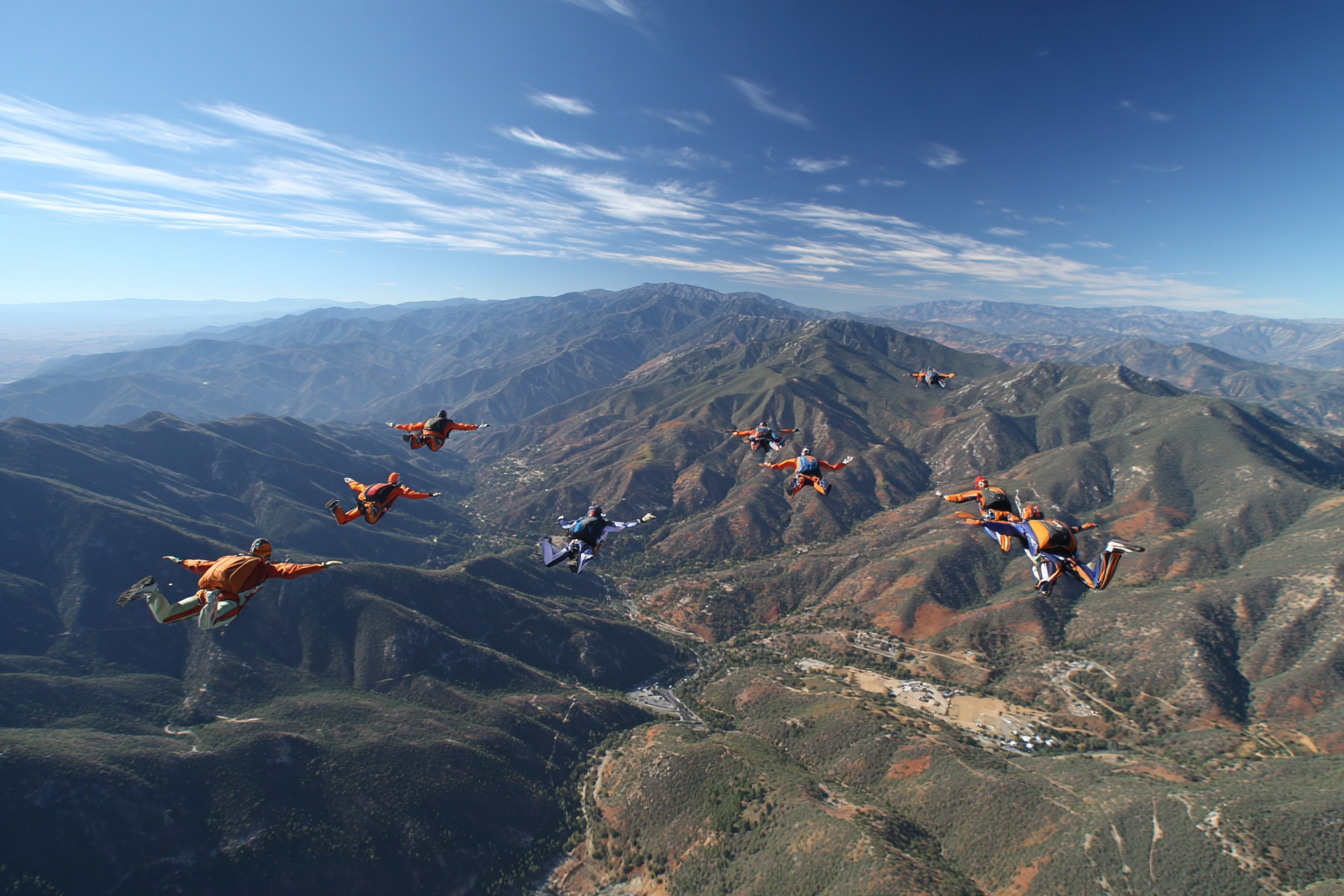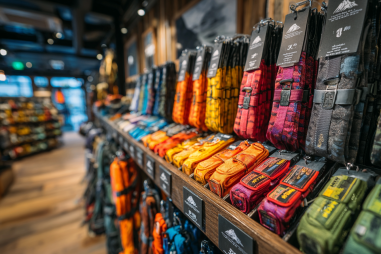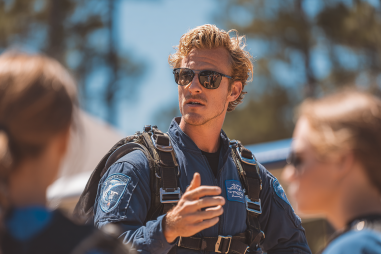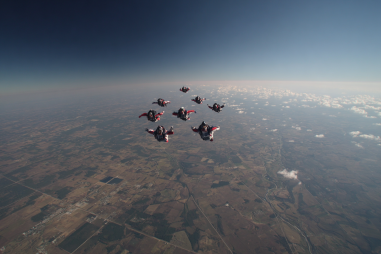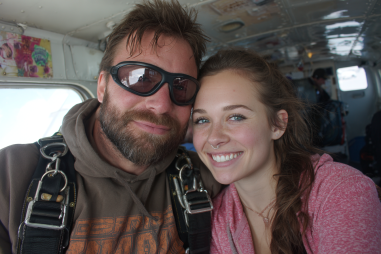Skydiving is an exhilarating sport that pushes the boundaries of human experience, but with that thrill comes inherent risk. For advanced jumpers, safety goes beyond the basics. Mastering advanced skydiving safety procedures and protocols is critical for navigating complex jump scenarios and mitigating potential dangers efficiently. Whether tackling high-altitude jumps, coordinating large group formations, or preparing for adverse conditions, experienced skydivers must adhere to meticulous safety standards to protect themselves and their fellow jumpers. This article dives deep into the sophisticated safety strategies and protocols that elevate your skydiving practice to a professional level.
Overview of Advanced Skydiving Safety Concepts
At the core of advanced skydiving safety is the understanding that jumps become more complex as the level of difficulty increases. Unlike beginner jumps that focus on fundamental skills, advanced jumps often involve nuanced variables such as high altitude, night conditions, large formations, or unusual equipment like wingsuits. Safety procedures must therefore evolve accordingly.
Key advanced concepts include risk assessment tailored to the specific type of jump, situational awareness, and decision-making under pressure. Advanced safety is about anticipating what can go wrong and embedding redundancies within every stage—from packing to landing. This mindset transforms careful preparation into instinctual action when seconds count.
Pre-jump Prep for High-risk Jumps
Preparation is everything when it comes to high-risk jumps, and the pre-jump stage sets the foundation for success. Experienced skydivers adopt rigorous checklists that go beyond the basics, taking into account the unique challenges of their planned jump. This often involves:
- Detailed weather analysis, including wind shear, visibility, and cloud layers
- Reviewing and visualizing the jump plan with teammates and instructors
- Double-checking all equipment, focusing on components specific to the jump type, such as oxygen systems for high altitudes or lighting for night jumps
- Physical and mental conditioning, ensuring the jumper is fully alert, hydrated, and rested
- Emergency scenario drills to mentally prepare for potential in-air contingencies
Pre-jump briefings with the entire jump team serve as a critical moment for sharing last-minute updates and confirming roles, exit order, and alternate plans. These briefings foster collective responsibility and clarity.
Managing Equipment for Extreme Conditions
Advanced skydiving frequently involves exposure to extreme conditions – from freezing temperatures at altitude to intense sun glare or turbulent airflow. Managing equipment appropriately is paramount to maintaining operational reliability and jumper safety.
Some best practices include:
- Specialized Gear: Utilize equipment rated for the environment, such as insulated suits, goggles with polarized lenses, or temperature-regulated gloves.
- Rig Maintenance: Perform extra thorough inspections before and after every jump. Pay special attention to container integrity, lines, and pilot chute functionality, especially when exposure to moisture or cold could impact performance.
- Redundancy Systems: Carry backup oxygen tanks for high-altitude freefall or alternate visual aids for night jumps.
- Environmental Adaptations: Adjust packing techniques to account for material contraction in cold or expansion in heat, and familiarize yourself with how varying air densities affect canopy deployment and flight characteristics.
These measures ensure that equipment integrity remains uncompromised no matter the conditions encountered.
Coordination and Communication in Group Jumps
Group jumps magnify the importance of flawless coordination and clear communication, especially when performing complex formation or relative work. Advanced skydivers rely on precise timing and spatial awareness to maintain safety while achieving desired aerial configurations.
Effective group jump safety entails:
- Pre-jump Planning: Each member must know their slot, exit order, and break-off altitude well in advance.
- Hand Signals and Body Language: Since verbal communication is impossible during freefall, nonverbal cues become essential for adjustments and signaling emergencies.
- Altitude Awareness: Jumpers use audible altimeters and visual checks to maintain safe separation during break-off.
- Emergency Roles: Clear pre-defined actions if a member malfunctions or is out of position help reduce panic and confusion.
Incorporating these elements into practice sessions and real jumps reinforces teamwork and helps prevent collisions and mid-air confusion.
Handling Malfunctions and Emergency Scenarios
Even for pros, malfunctions happen. Advanced skydiving safety focuses heavily on swift, informed reactions during emergencies. The highest level skydivers regularly train for:
- Reserve Deployment Techniques: Knowing exactly how to cut away a main canopy and deploy the reserve in varied situations.
- Line Twists and Entanglements: Rapid identification and correction methods before altitude loss becomes critical.
- Off-heading Canopy Flight: Procedures for regaining control or preparing for a safe emergency landing.
- Landing Malfunctions: Techniques to handle dangerous landings, including PLFs (parachute landing falls) and smart flare timing.
Many experienced skydivers also participate in emergency simulation drills and utilize video analysis to refine their responses continuously, making sure muscle memory can override hesitation when every second matters.
Post-jump Analysis and Continuous Improvement
Advanced safety is not just about the jump itself but the learning that follows. A thorough post-jump analysis helps identify potential safety gaps and improve future protocols.
Key activities include:
- Debriefing with team members to discuss what went well and what could be improved
- Reviewing jump videos and altimeter data to analyze performance and adherence to safety standards
- Inspecting equipment for wear or damage that might have occurred during the jump
- Logging lessons learned and updating training routines to address any discovered weaknesses
This culture of continuous improvement enables experienced skydivers to stay ahead of risks and sharpen their reaction capabilities over time.
Safety Innovations and Emerging Protocols
Technology and research continuously enhance skydiving safety. Pro skydivers benefit from staying current with innovations such as:
- Automatic Activation Devices (AADs): These electronic systems automatically deploy the reserve parachute at a preset altitude if the jumper has not deployed it manually, drastically reducing fatality rates.
- Advanced Altimeters: Digital wrist and audible altimeters offer refined altitude alerts to aid in precise freefall timing.
- Wingsuit Safety Protocols: Specialized training guidelines for wingsuit proximity flying, formation sizes, and landing safety.
- Data Analytics: Use of telemetry and jump data analytics to anticipate malfunction probabilities or identify high-risk patterns.
Adopting emerging best practices ensures professional skydivers maintain cutting-edge safety standards compatible with evolving sport dynamics.
Dedication to Advanced Safety Practices Enhances Every Jump
For professionals expanding their skydiving expertise, embracing advanced safety procedures and protocols isn’t an option—it’s a necessity. The complexities of high-risk jumps, challenging environments, and cooperative team efforts demand an elevated awareness, meticulous preparation, and continual learning. By integrating enhanced equipment management, refined emergency responses, and leveraging new technologies, skilled jumpers safeguard not only their lives but also the integrity and spirit of the sport. Ultimately, true mastery in skydiving safety is an ongoing commitment—one that turns adrenaline into assurance on every dive from the skies.

